Featured Comment:
“I really love making this awase dashi at home for stocking. It does help for any kind of hearty soup meals.”
– Calypso
What is Kombu Bonito Awase Dashi?
Awase dashi (合わせ出汁) is a Japanese soup stock that’s full of umami flavor. It’s made by blending together different ingredients to create a rich, deep flavor. Unlike single-ingredient dashi, awase dashi weaves together distinct components, each contributing its unique character to the final brew.
The classic and most common awase dashi combination uses dried bonito flakes (katsuobushi) and kombu kelp. The bonito flakes give the stock a rich, smoky flavor, while the kelp adds a subtle sweetness and brightness.
Records show that kelp first appeared in Japanese cuisine around 839, while bonito was documented earlier in 757. The term “dashi” itself emerged during the Edo period (1603-1867), and this foundational stock has remained the backbone of Japanese cuisine ever since.
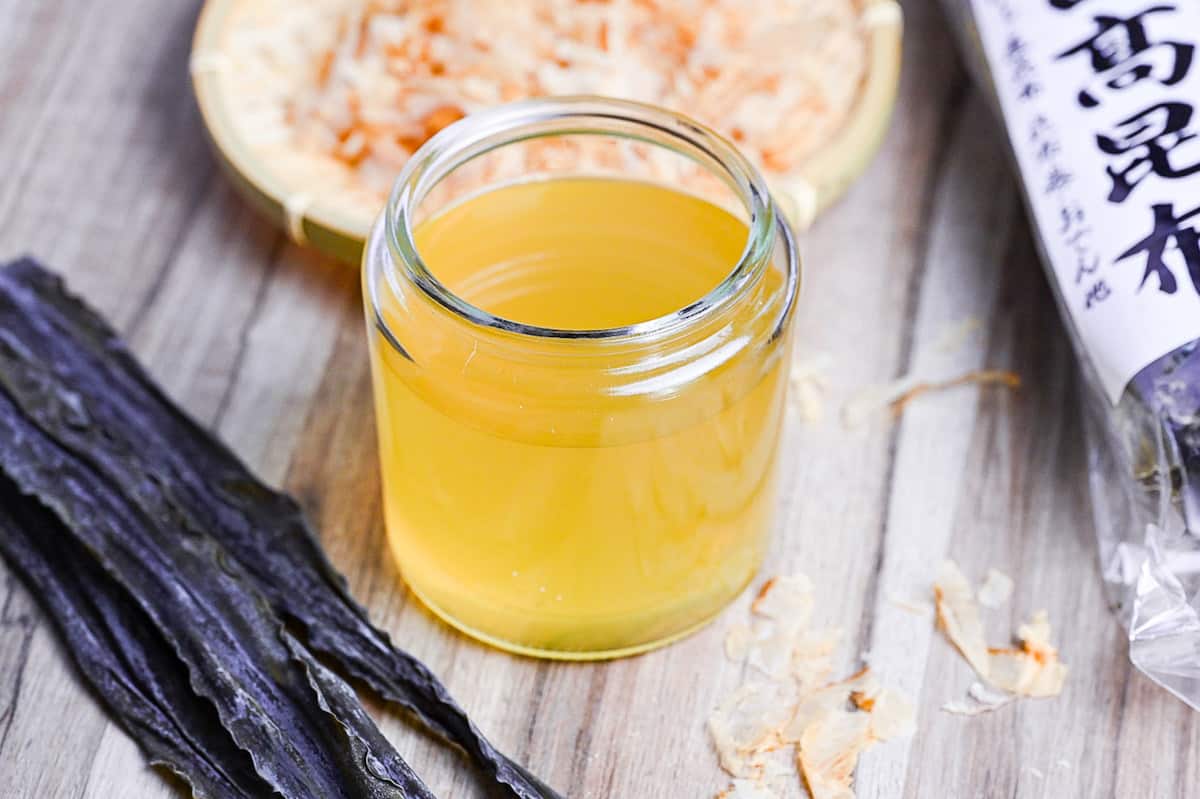
This synergy is like a well-conducted orchestra, where all the different elements work together to make something better than the sum of its parts. Awase dashi isn’t too overpowering, so it doesn’t smother the other flavors. Instead, it just adds a nice, subtle umami base that helps the other ingredients pop.
It’s so versatile that it’s a must-have in Japanese cooking! This ancient technique is still used in countless Japanese dishes today, showing that some traditions just get better with time.
How The Umami is Created
The awase dashi has a rich umami flavor, and the secret to that is a mix of glutamic acid and inosinic acid. These compounds are well-known for their ability to enhance our taste buds and elevate the overall dining experience.
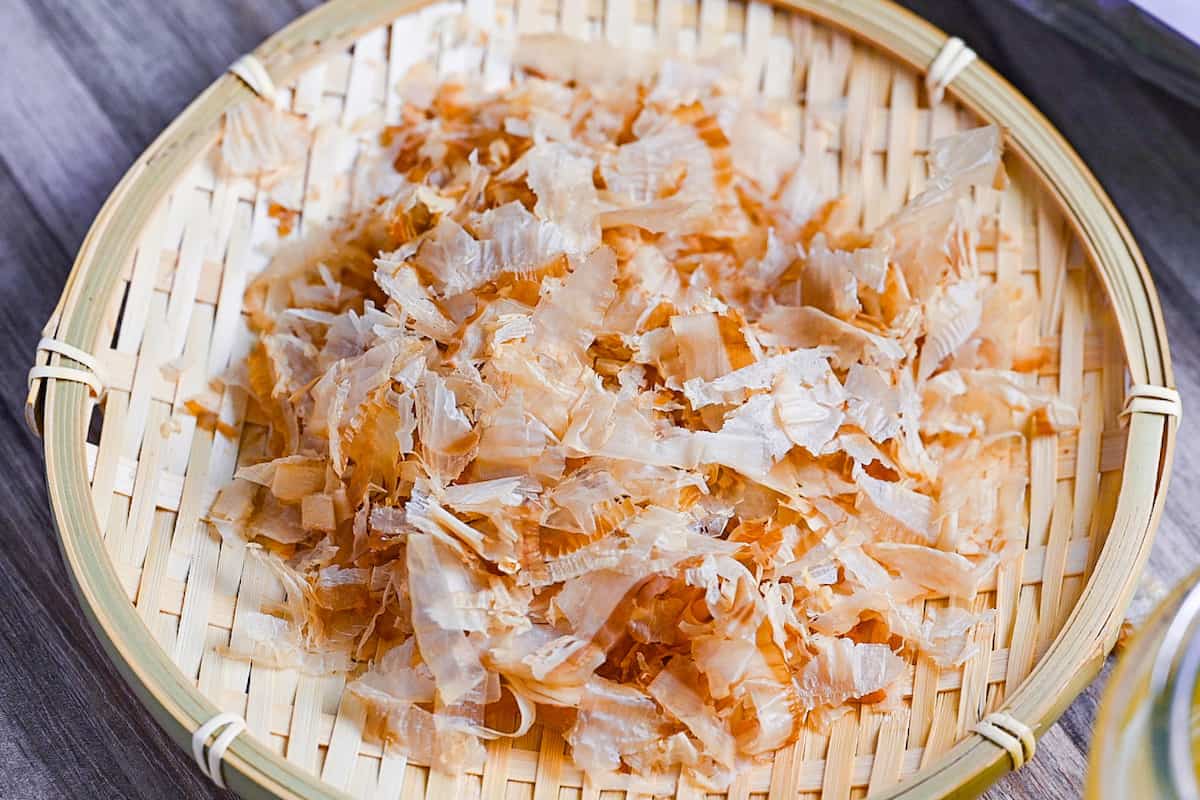
Bonito flakes, made from dried, fermented, and smoked skipjack tuna, are full of inosinic acid. This special umami compound comes from ATP (adenosine triphosphate), which is a key molecule that gives our cells energy.
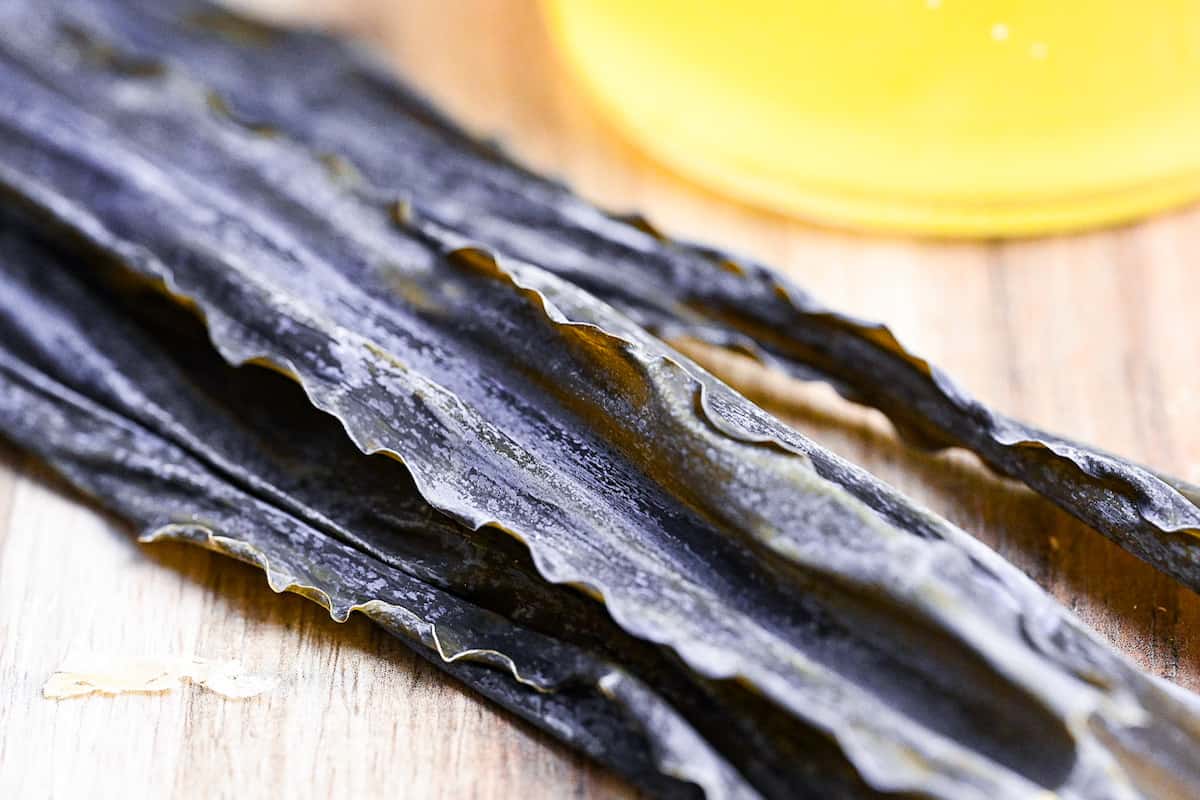
On the other hand, kelp has high levels of glutamic acid. This amino acid is key for protein synthesis and various nutritional processes in our bodies. As kelp simmers, its glutamic acid dissolves into the water, giving the broth its unique taste and umami.
When bonito flakes and kelp are combined in a dashi, the way the glutamic acid and inosinic acid work together creates a unique flavor. This creates a unique umami flavor that’s a key part of Japanese cuisine.
Did You Know You Can Make Two Batches of Dashi?
Did you know you can reuse bonito flakes and kelp to make dashi twice? In Japan, the first extraction is called ichiban-dashi (一番出汁), and the second is called niban-dashi (二番出汁). It’s kind of like making a second cup of tea with the same tea bag — you can still get that flavor, just with different characteristics.
This technique isn’t new at all. According to the book “Ryori Monogatari (A Story of Cooking)” published in 1643, the method of making dashi twice was already well-established by that time.
The two extractions serve different purposes in high-end restaurants in Japan:
- Ichiban-dashi: The star of the show at fancy Japanese restaurants. This first extraction captures the most delicate and refined flavors, making it perfect for clear soups and dishes where subtle taste is vital. Even veteran chefs with decades of experience say that it’s the most challenging and nerve-wracking moment of their workday.
- Niban-dashi: The second extraction is made by slowly drawing out the remaining umami from the same ingredients. While it’s not as refined as the first extraction, niban-dashi is perfect for heartier dishes like simmered foods and miso soup.

Professional kitchens follow a strict hierarchy with dashi: while ichiban dashi (first extraction) can be used in place of niban dashi (second extraction), using niban dashi as a substitute for ichiban dashi is considered improper.
Anyhow, when you make dashi at home, you should definitely try this double-extraction method! It’s a great way to use your ingredients to the full. You can use each extraction in whatever dishes you’re cooking to get the full dashi experience!
Ingredients You Will Need
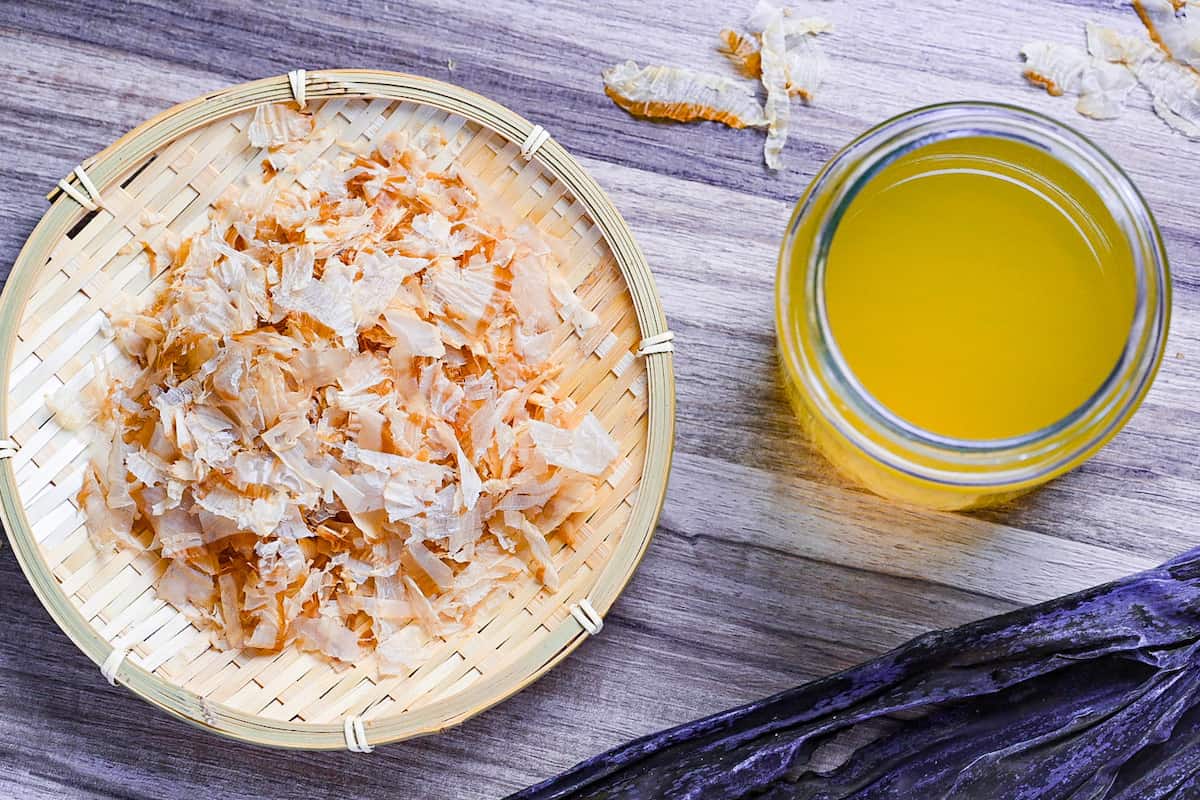
- Cold Water: For the best Japanese dashi, use soft water with a hardness ranging from 0 to 30. Soft water effectively extracts the umami from kombu and dried bonito flakes. On the other hand, hard water can react with the protein in kelp, potentially resulting in a bitter taste.
- Dried Kelp (Kombu): There are lots of different kinds of kelp, but Rausu, Rishiri, Ma, and Hidaka kelp are especially worth checking out. For more detailed info on each type, check out my full kombu guide. It’s worth noting that Hidaka kombu is the easiest to find, most commonly used at home and the one I used in this recipe.
- Bonito Flakes (Katsuobushi): Just like kelp, bonito flakes come in different types and grades. Take a look at my detailed guide to katsuobushi to get a better understanding of the different types and choose the one that’s right for you.
Since bonito flakes are made from fish (specifically, skipjack tuna) this awase dashi is not suitable for vegetarians or vegans. For a plant-based awase dashi, check out my shiitake and kombu dashi recipe.
Jump to Full Recipe Measurements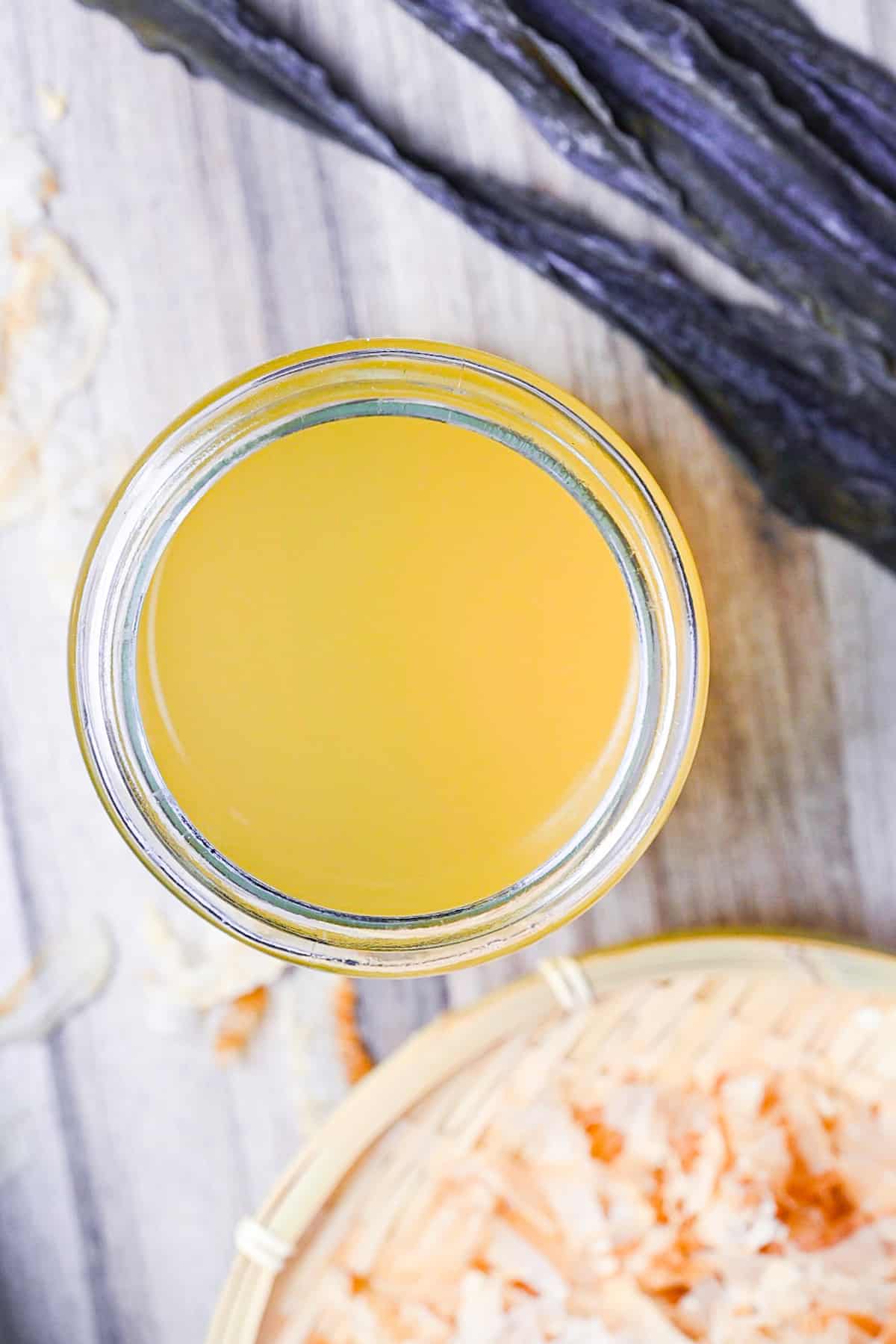
Visual Walkthrough & Tips
Here are my step-by-step instructions for how to make Homemade Awase Dashi at home. For ingredient quantities and simplified instructions, scroll down for the Printable Recipe Card below.
If you prefer to watch the process in action, check out my YouTube video of this recipe for a complete visual walkthrough!
How to Make Ichiban Dashi

Place the kombu in water and leave to rehydrate for at least 30 minutes or up to 24 hours. If you choose the longer soaking time, cover it with a lid and store it in the refrigerator. Rehydrating the kombu enables us to extract its flavor through simmering later.
That white powdery coating you may notice on the surface of the kelp is not harmful – it’s actually a natural flavor enhancer composed of glutamic acid and mannitol. If there is sand or dust on the screen, wipe it gently instead.

Unless you are using “Rausu” or “Ma” kombu, soaking alone is generally not enough to extract its full flavor potential.
Put the pot on medium-low heat and warm the kombu and water gradually. This slow heating process, which takes about 10 minutes, is crucial for getting the best flavor out of the kombu. Keep an eye on the edges of the pot—you’ll see small bubbles forming.
When you’re making dashi, don’t boil kombu (dried kelp) because it’ll release bitter compounds Instead, take the kombu out of the water before it boils.

When you see those little bubbles forming around the edges of your pot (approximately 65°C / 149°F), take the kombu out.


After removing the kombu, increase the heat to medium and bring the liquid to a boil. This step helps eliminate any unwanted kelp smell. If any foam or scum appears on the surface while boiling, skim it off with a fine-mesh strainer or spoon.

Add 100ml of cold water to the pot, this will replace the water absorbed by the kombu and bring down the temperature slightly. Reduce the heat to its lowest setting and add in the bonito flakes. Allow the bonito flakes to sink naturally – don’t stir or agitate them with chopsticks or utensils.
Then let them steep for 3 minutes.
Alternatively, if you’re having trouble controlling the heat on your stove, you can just turn it off and let the bonito flakes steep for 5 minutes instead of 3.

Having lived in England for many years, I deeply understand how much bonito flakes and kombu can cost outside Japan. Professionals in Japan use these precious ingredients abundantly to create dashi as it’s their foundation, their lifeline.
But replicating restaurant-style dashi at home, especially outside Japan, can strain your wallet. Even now that I’m back in Japan, I still wince when measuring out tens of grams of katsuobushi!
The good news is that when you’re cooking at home, you don’t have to use the same amount as a restaurant. You can make perfectly good dashi with more modest amounts of ingredients. Similarly, you can use half the amount of kombu called for this recipe.
The key is finding a balance that is sustainable for you!


Then, pour the dashi through a fine-mesh sieve lined with fine cloth (like cheesecloth) or paper towels placed over a heatproof bowl. This step is key to getting a clear broth because bonito flakes are really fine and can cloud the liquid.

Don’t squeeze or press the strained bonito flakes, or you’ll release bitter compounds and unwanted aromas into your carefully prepared dashi!

To transform your freshly made ichiban-dashi into a clear soup base, season 600ml of strained dashi with:
- 1/2 teaspoon sea salt
- 1 tablespoon sake
- 1 teaspoon Japanese light soy sauce (usukuchi shoyu)
Warm the seasoned broth over low heat for 2 minutes to allow the flavors to meld together. This simple enhancement creates a delicate, balanced soup base perfect for traditional clear soups.
Jump to Full Recipe MeasurementsHow to Make Niban Dashi


Place the used kombu and katsuobushi from your first dashi into a pot. Add 1 liter of fresh water along with 1 handful of fresh katsuobushi. Heat over medium heat until it reaches a boil.

Reduce heat to medium-low once boiling and simmer for 10 minutes. Remove any foam or scum that rises to the surface using a fine-mesh skimmer or spoon. Unlike the first dashi, where overly long cooking can release bitter compounds, this second extraction benefits from a longer simmer to draw out the remaining flavors.

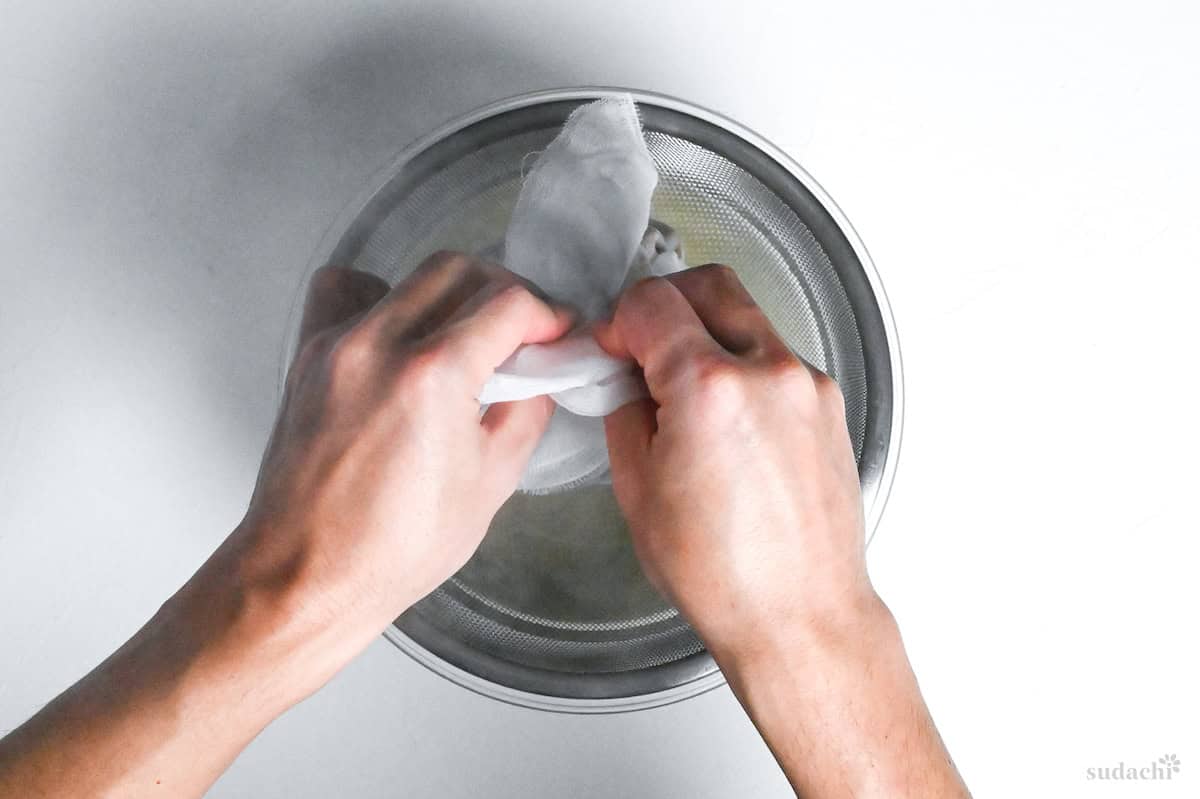
Then, strain the liquid through a fine-mesh strainer or a cheesecloth-lined colander. Gently press or squeeze on the solids to get all the flavor out. Unlike with the first dashi, where you have to be super gentle, you can be more thorough with straining here because you’re capturing the last of the flavors.

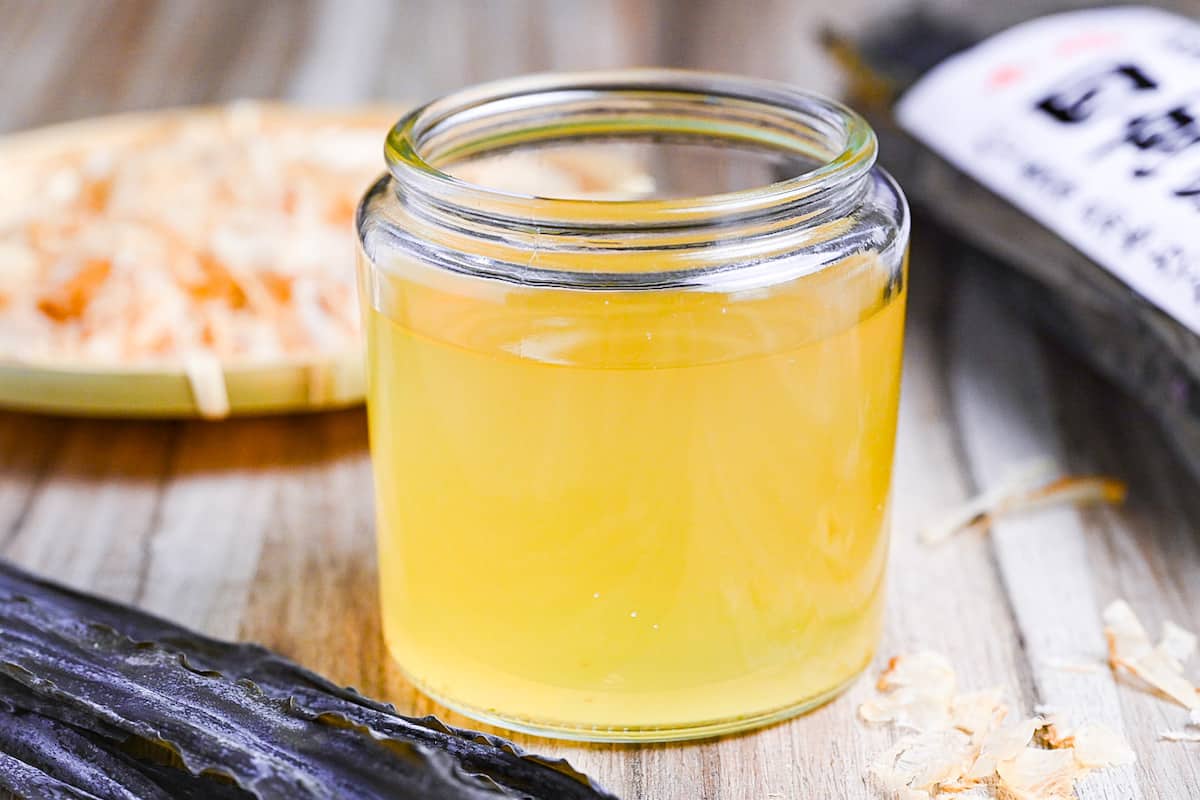
How to Store
Making a large batch of dashi in advance is indeed a time-saver, but it’s essential to store it correctly to maintain its freshness and flavor. Storing dashi at room temperature is a no-go, as it can quickly deteriorate and spoil.
Refrigeration is the way for those who plan to use the dashi quickly. However, it’s crucial to let the hot dashi cool to room temperature before transferring it to an airtight container, like a jar or Tupperware. Once sealed, you can store it in the refrigerator for up to a week.
If you want to keep a larger stock of dashi for future use, freezing is your best bet. Like refrigeration, ensure the dashi has cooled down before sealing it in an airtight container. Once properly stored, you can keep it in the freezer for up to one month.
Storage summary
Room temperature – Not recommended.
Refrigerated – Up to a week.
Frozen – Up to a month.
FAQ
Here are answers to frequently asked questions I have received across all platforms, including here, YouTube, Instagram, and Pinterest. If you have any questions, feel free to send them to me anytime! It will be a big help for everyone in this community!
While restaurants measure katsuobushi precisely, home cooking needs more flexibility. The variety in katsuobushi types, shaving styles, and densities makes it impractical to specify exact measurements in grams. Additionally, knowing that bonito flakes can be quite expensive outside Japan, specifying a large amount in grams might discourage people from trying the recipe. Using “handful” as a measurement keeps the recipe accessible and prevents overuse.
This recipe calls for 10 g of kombu, but you can adjust that based on what you have on hand. Different types of kombu can vary in size and thickness, so you might be able to get by with as little as 5 g. Just keep in mind that if you’re using less kombu, you’ll need to soak it for a bit longer. For smaller kombu, try soaking the kombu overnight in the refrigerator with a lid on.
In professional kitchens, the refined ichiban-dashi is used for delicate dishes like clear soups where you really want the dashi flavor to stand out. While restaurants never substitute niban-dashi for ichiban-dashi, home cooks can be more flexible. For the best experience of ichiban-dashi’s elegant flavor, try using it in a simple clear soup.
Homemade dashi offers noticeably superior flavor and refinement compared to instant alternatives. However, this doesn’t mean you need to make it from scratch every time you cook. For everyday cooking, dashi packets (tea bag-style) make an excellent convenient alternative. Consider making homemade dashi for special dishes where you want its subtle, elegant flavors to shine through or when you feel like it.
The second extraction won’t actually be bitter in taste, but it will have a less refined flavor profile compared to the first extraction. Rather than bitterness, you’ll notice it has a less delicate character with a weaker aroma than ichiban dashi.
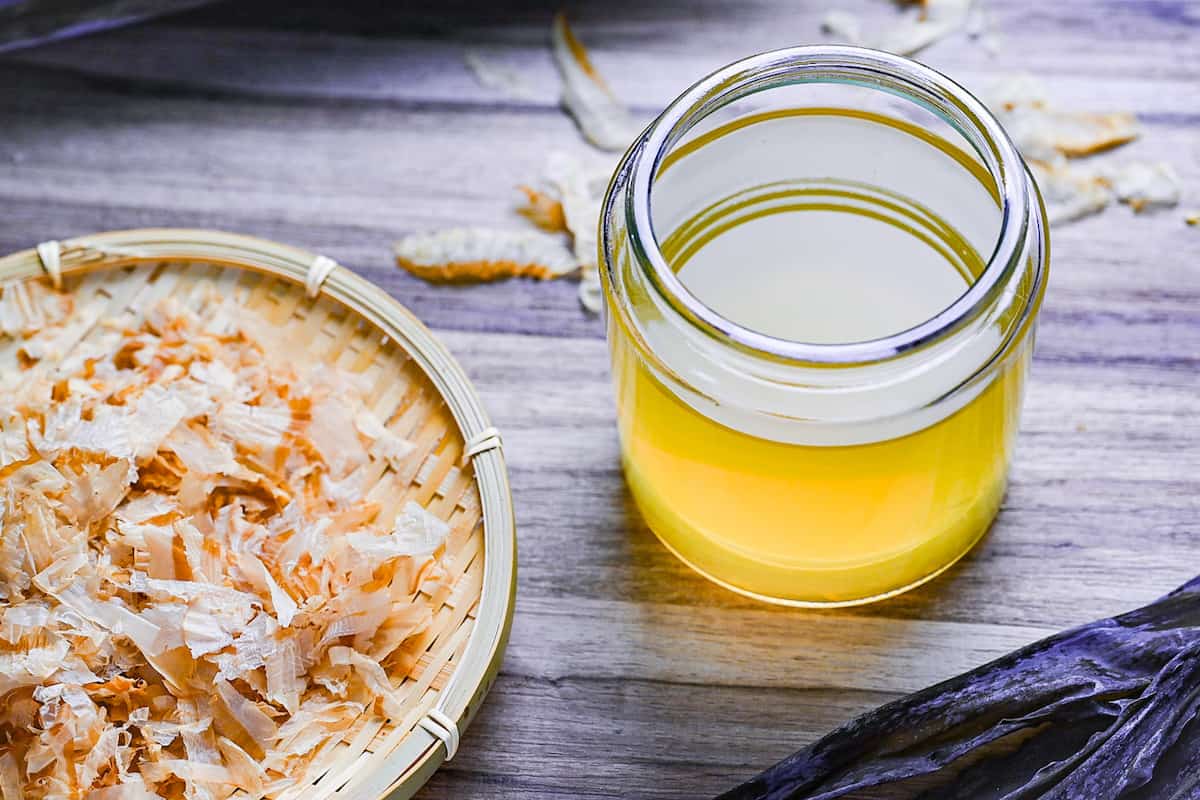
I hope you enjoy this Homemade Awase Dashi recipe! If you try it out, I’d really appreciate it if you could spare a moment to let me know what you thought by giving a review and star rating in the comments below. It’s also helpful to share any adjustments you made to the recipe with our other readers. Thank you!
Ideas to Use This Recipe
- Authentic Miso Soup
- Kake Udon (Udon Noodle Soup)
- Nikujaga (Japanese Meat and Potato Stew)
- Chicken Zosui (Rice Soup)
Try out these recipes using your homemade dashi stock!
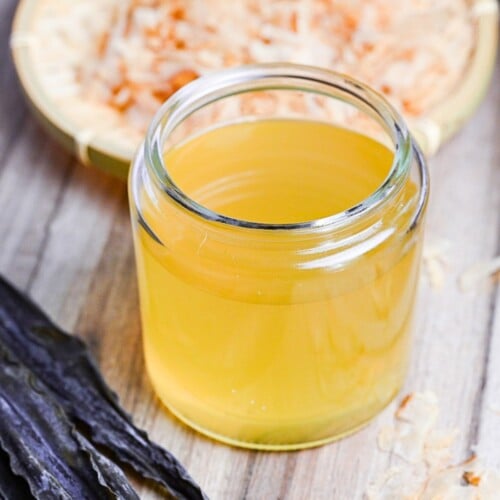
Homemade Awase Dashi with Bonito Flakes and Kombu Kelp
Ingredients
Ichiban Dashi (First Extraction)
- 1000 ml cold water
- 5-10 g dried kelp (kombu)
- 100 ml water
- 2 handfuls bonito flakes (katsuobushi) approx 1 cup per handful
Niban Dashi (Second Extraction)
- rehydrated kombu leftover from ichiban dashi
- leftover bonito flakes from ichiban dashi
- 1000 ml water
- 1 handful bonito flakes (katsuobushi) fresh/unused
Instructions
Ichiban Dashi (First Extraction)
- Pour 1000 ml cold water into a pot and add 5-10 g dried kelp (kombu). Let the kombu soak until softened. This will take at least 30 minutes. (You can soak it overnight if you like, put cover with a lid and store in the fridge if you do.)

- Move the pan to the stove and slowly heat over a medium-low or medium setting. Bring to almost (but not quite) boiling, then remove the kombu and save it for later.

- Increase the heat and bring the dashi to a boil. Scoop out any foam that forms on the surface.

- Reduce the heat to a simmer and add 100 ml water. Drop 2 handfuls bonito flakes (katsuobushi) into the pot and let them sink naturally. Do not mix. Steep for 3 minutes. Alternatively, turn off the heat and steep for 5 minutes.

- Line a sieve with a fine mesh cloth (cheesecloth or similar, kitchen paper in a pinch) and place a pan or heatproof bowl underneath. Pour the dashi through the paper towel to catch the bonito flakes. Do not squeeze.

- Use in your favorite Japanese recipes and enjoy!

Niban Dashi (Second Extraction)
- Place the rehydrated kombu and leftover bonito flakes from ichiban dashi back in the pot.

- Add 1000 ml water and a fresh 1 handful bonito flakes (katsuobushi). Bring to a boil over medium heat.

- Once boiling, reduce the heat and gently simmer for 10 minutes. Scoop out any scum that forms on the surface.

- Strain the dashi using the cloth-lined sieve from before.

- Leave until it's cool enough to touch and gently squeeze the cloth.

- Cool and store or use straight away. Enjoy!

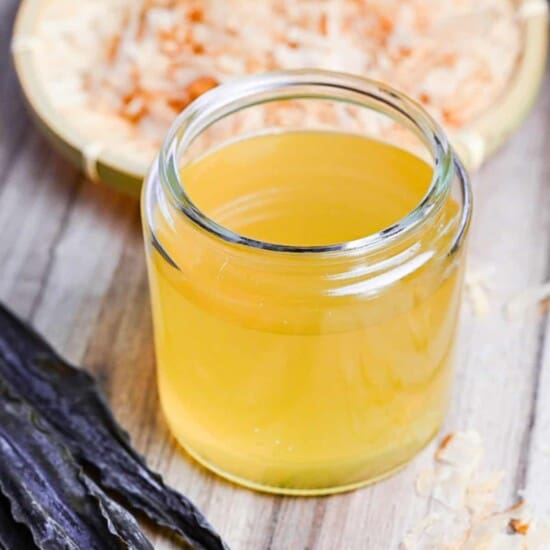




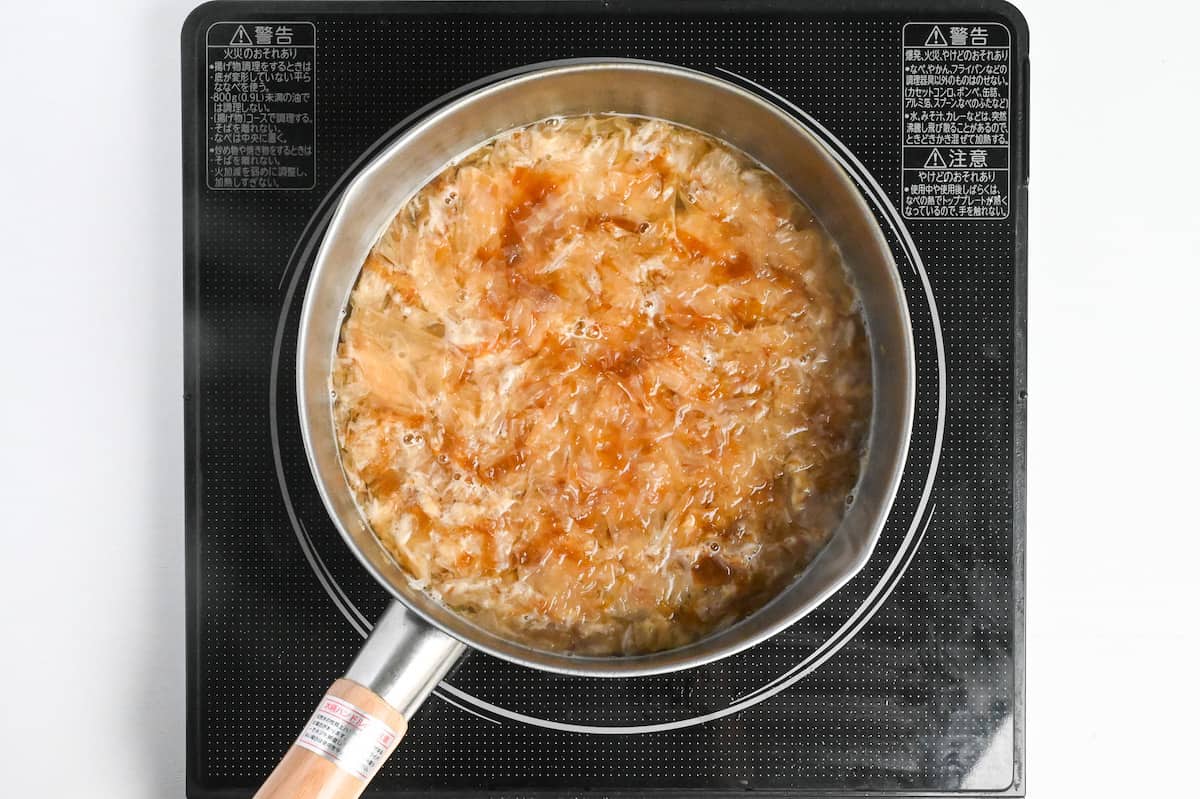

Thank you for this wonderful recipe
Thank you for the comment! I’m glad you liked the recipe!
hello, i really love making this awase dashi at home for stocking. it does help for any kind of hearty soup meals. do you have any tips to utilize the extracted kombu+katsuobushi mixture? several times I made it to some sort of furikake by chopping it finely and seasoning with shoyu and salt. do you have any more idea? thank you 🙂
Hi Calypso,
Thank you so much for your comment! For the leftover kombu, you might enjoy my kombu onigiri recipe (https://sudachirecipes.com/kombu-onigiri-recipe/) which uses rehydrated kombu. As for the katsuobushi, your furikake approach is excellent! I’m actually working on a homemade furikake recipe using leftover katsuobushi right now. I’ll share it with you as soon as it’s ready!
Yuto
Great in-depth explanation about the ingredients used. So valuable and educational. Knowing all this information now about the ingredients makes me want to try all your recipes! Thank you from Hawaii!!
Hi Karen,
Thank you so much for your kind words! I hope you will enjoy my recipes! 🙂
Yuto